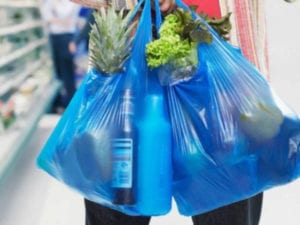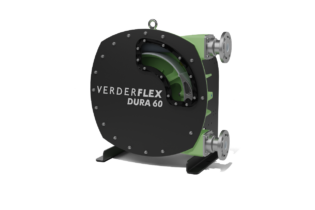The Council for Scientific and Industrial Research (CSIR) has released the findings of a life cycle sustainability assessment (LCSA) of grocery carrier bags in South Africa.
LCSA is a tool that unpacks the environmental, social and economic impacts of a product throughout its life cycle. The study shows that reusable plastic carrier bags are the best option in South Africa, as they have a substantially lower environmental impact compared to single-use bags – provided that consumers do reuse them. The study, funded by the Department of Science and Innovation (DSI), provides a scientific assessment which will inform government, producers, retailers, and consumers about the environmental and socio-economic impacts of different types of carrier bags. It mainly aims to identify which “bag is best” in the South African context. Dr. Henry Roman, Director of Environmental Services and Technologies at the DSI says that the results of this research are important in evidencing how single-use plastics is managed in South Africa. “Although single-use plastics provide many benefits, there are also many avoidable plastic products that negatively impact our environment. Developing capability in LCSA allows us to make informed decisions on the most appropriate material for product design,” Roman asserts. The Study The study assessed 16 types of carrier bags made from a range of different materials. It included the standard, single-use plastic shopping bags that most people are accustomed to, which are made from high-density polyethylene (HDPE), with varying levels of recycled content and a thickness of 24 microns. It also included several reusable and biodegradable alternatives. Twenty-one environmental and socio-economic indicators were used to assess each bag. This included 18 indicators that are typically used in environmental life cycle assessment (LCA) studies (such as water use, land use, global warming, etc.). The team also developed a new indicator to account for the impacts of plastic pollution, which is currently missing from most LCA methods. Besides, two key socio-economic indicators (impacts on employment and affordability for consumers) were added, which are also missing from most LCA studies. The FindingsAccording to the findings, the best performing bag overall is the reusable plastic bag – also made from HDPE – but thicker and stronger (70 microns) than the standard 24 micron single-use bag.
This bag is currently sold at one of South Africa’s major grocery supermarket groups for R3 per bag, with a 50c discount on grocery shopping each time it is reused. The other reusable bags – made from other types of plastics, such as polyester (recycled PET) and polypropylene – also perform well. While single-use bags rank lower, the best performing among them is the standard 24 micron HDPE plastic bag with 100% recycled content. Among the 24 micron HDPE bags, the higher the recycled content, the better the overall performance of the bag. In general, biodegradable plastic and paper carrier bags perform poorly overall (except in terms of plastic pollution), due mainly to their land and water use impacts. Biodegradable bags (particularly those made from a combination of imported polybutylene adipate terephthalate (PBAT) and starch) only outperform the conventional 24 micron (single-use) HDPE bags if the latter has a recycled content of 50% or less. While reusable carrier bags perform better overall, the single-use bags are best from an employment perspective. In particular, single-use paper bags perform well in terms of job creation, followed by 24 micron HDPE bags with 100% recycled content. “This study shows that ‘biodegradable’ doesn’t necessarily mean better – at least not for carrier bags,” says Anton Nahman, a principal environmental economist at the CSIR, who led the research team. “Taking into account environmental and socio-economic impacts across the full product life cycle – from resource extraction, through production and use to end of life – the best performing bags are all made from conventional plastics. In particular, the reusable ones are best – but only if they are reused, as many times as possible.” The COVID-19 pandemic may delay global action against addressing certain problematic single-use plastics as some retailers suspend the use of reusable bags in stores. “While this study shows that reusable bags are the best option for South Africa if retailers and consumers want to use single-use bags now in the interim, then the 100% or 75% recycled content 24 micron HDPE bags are the next best solution. Increasing the recycled content of products will also help to create a demand and a market for waste plastic, typically collected by informal waste reclaimers, helping to improve their livelihoods during a difficult time, further compounded by the very low oil prices,” notes Prof. Linda Godfrey, Manager of the CSIR Waste Research Development and Innovation Roadmap Implementation Unit. This LCSA capability now exists within South Africa and the CSIR. “We hope that brand owners will use this tool to inform the choice of products that they put into the South African market, to ensure that they have the best overall environmental, social and economic performance,” says Dr. Douglas Trotter, Manager of the Sustainable Ecosystems Area of business for the CSIR. “Sustainable product design is a critical part of South Africa’s transition to a more circular economy.”







